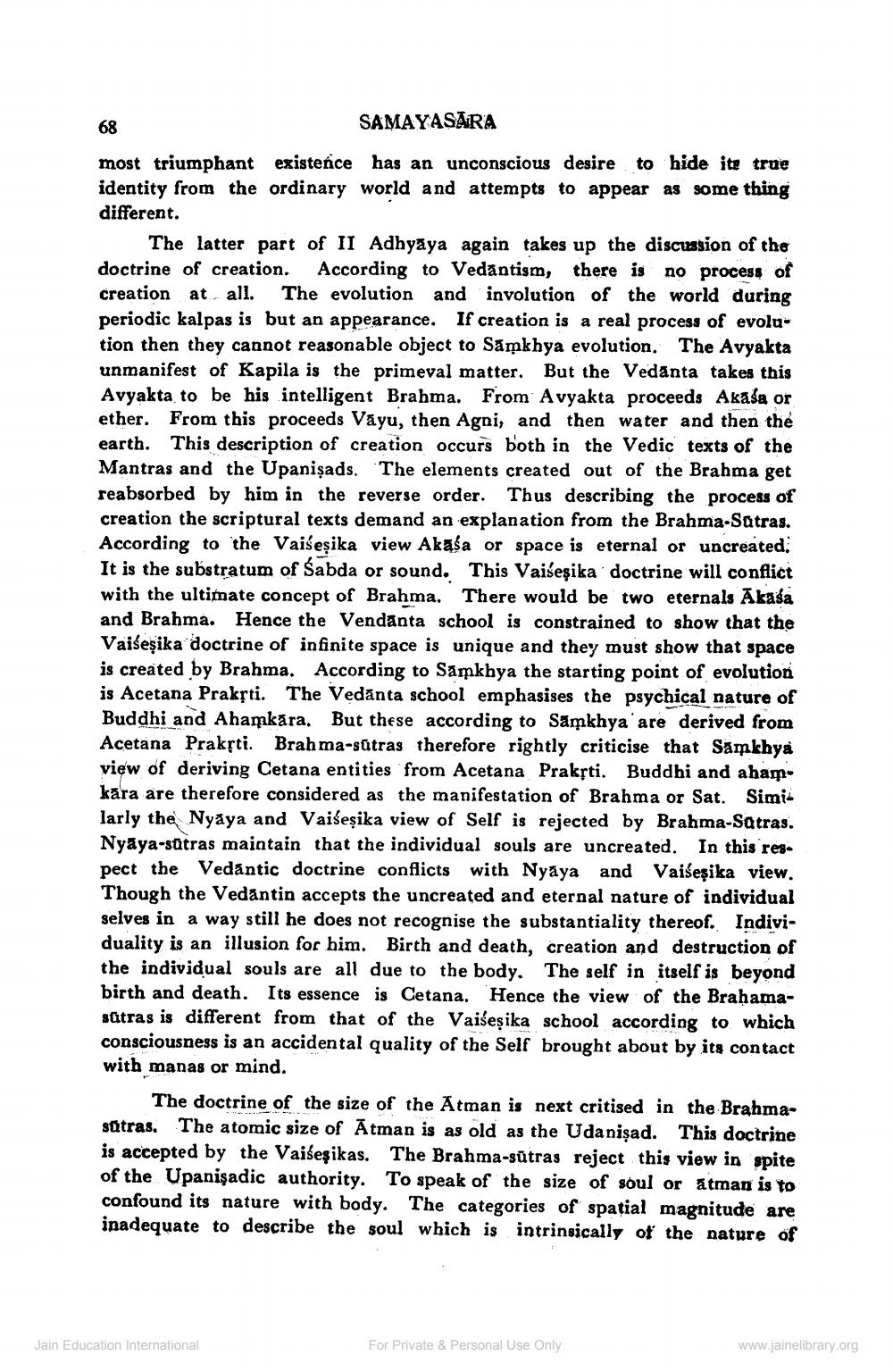________________
68
SAMAYASARA
most triumphant existence has an unconscious desire to hide its true identity from the ordinary world and attempts to appear as some thing different.
The latter part of II Adhyaya again takes up the discussion of the doctrine of creation. According to Vedantism, there is no process of creation at all. The evolution and involution of the world during periodic kalpas is but an appearance. If creation is a real process of evolution then they cannot reasonable object to Samkhya evolution. The Avyakta unmanifest of Kapila is the primeval matter. But the Vedanta takes this Avyakta to be his intelligent Brahma. From Avyakta proceeds Akasa or ether. From this proceeds Vayu, then Agni, and then water and then the earth. This description of creation occurs both in the Vedic texts of the Mantras and the Upanisads. The elements created out of the Brahma get reabsorbed by him in the reverse order. Thus describing the process of creation the scriptural texts demand an explanation from the Brahma-Sutras. According to the Vaiseșika view Akasa or space is eternal or uncreated. It is the substratum of Sabda or sound. This Vaiśeşika doctrine will conflict with the ultimate concept of Brahma. There would be two eternals Akasa and Brahma. Hence the Vendanta school is constrained to show that the Vaiseşika doctrine of infinite space is unique and they must show that space is created by Brahma. According to Samkhya the starting point of evolution is Acetana Prakṛti. The Vedanta school emphasises the psychical nature of Buddhi and Ahamkara. But these according to Samkhya' are derived from Acetana Prakṛti. Brahma-sütras therefore rightly criticise that Samkhya view of deriving Cetana entities from Acetana Prakṛti. Buddhi and ahamkara are therefore considered as the manifestation of Brahma or Sat. Simi larly the Nyaya and Vaiśeṣika view of Self is rejected by Brahma-Satras. Nyaya-sutras maintain that the individual souls are uncreated. In this res pect the Vedantic doctrine conflicts with Nyaya and Vaiśeşika view. Though the Vedantin accepts the uncreated and eternal nature of individual selves in a way still he does not recognise the substantiality thereof. Individuality is an illusion for him. Birth and death, creation and destruction of the individual souls are all due to the body. The self in itself is beyond birth and death. Its essence is Cetana. Hence the view of the Brahamasutras is different from that of the Vaiseṣika school according to which consciousness is an accidental quality of the Self brought about by its contact with manas or mind.
The doctrine of the size of the Atman is next critised in the Brahmasütras. The atomic size of Atman is as old as the Udanisad. This doctrine is accepted by the Vaiśeşikas. The Brahma-sutras reject this view in spite of the Upanisadic authority. To speak of the size of soul or atman is to confound its nature with body. The categories of spatial magnitude are inadequate to describe the soul which is intrinsically of the nature of
Jain Education International
For Private & Personal Use Only
www.jainelibrary.org




